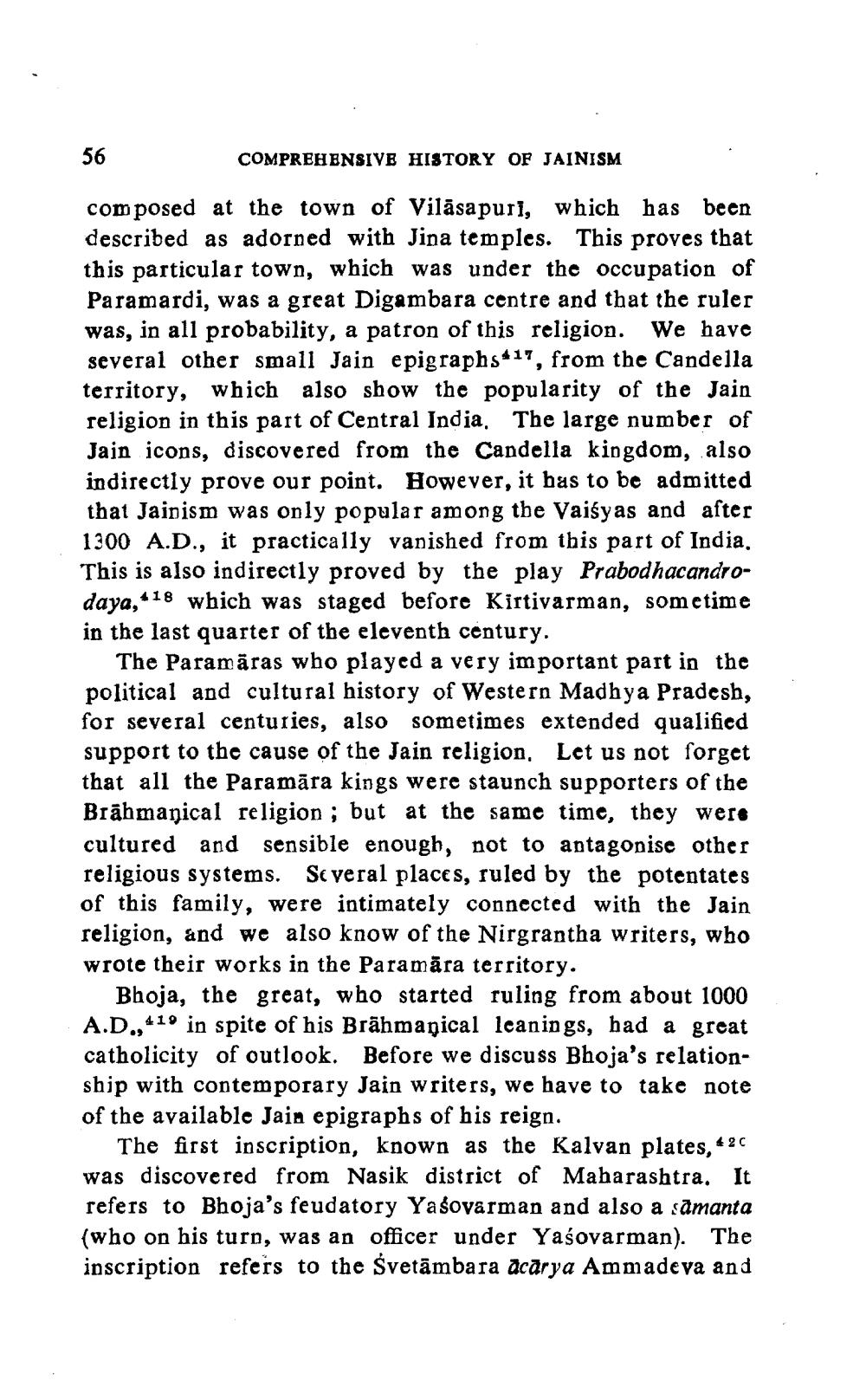________________
56
COMPREHENSIVE HISTORY OF JAINISM
composed at the town of Vilāsapuri, which has been described as adorned with Jina temples. This proves that this particular town, which was under the occupation of Paramardi, was a great Digambara centre and that the ruler was, in all probability, a patron of this religion. We have several other small Jain epigraphs*17, from the Candella territory, which also show the popularity of the Jain religion in this part of Central India. The large number of Jain icons, discovered from the Candella kingdom, also indirectly prove our point. However, it has to be admitted that Jainism was only popular among the Vaisyas and after 1300 A.D., it practically vanished from this part of India. This is also indirectly proved by the play Prabodhacandrodaya, *18 which was staged before Kirtivarman, sometime in the last quarter of the eleventh century.
The Paramāras who played a very important part in the political and cultural history of Western Madhya Pradesh, for several centuries, also sometimes extended qualified support to the cause of the Jain religion. Let us not forget that all the Paramāra kings were staunch supporters of the Brāhmaṇical religion ; but at the same time, they wers cultured and sensible enough, not to antagonise other religious systems. Several places, ruled by the potentates of this family, were intimately connected with the Jain religion, and we also know of the Nirgrantha writers, who wrote their works in the Paramāra territory.
Bhoja, the great, who started ruling from about 1000 A.D., 410 in spite of his Brāhmaṇical leanings, had a great catholicity of outlook. Before we discuss Bhoja's relationship with contemporary Jain writers, we have to take note of the available Jain epigraphs of his reign.
The first inscription, known as the Kalvan plates, + 20 was discovered from Nasik district of Maharashtra. It refers to Bhoja's feudatory Yašovarman and also a samanta (who on his turn, was an officer under Yaśovarman). The inscription refers to the Svetāmbara acārya Ammadeva and




